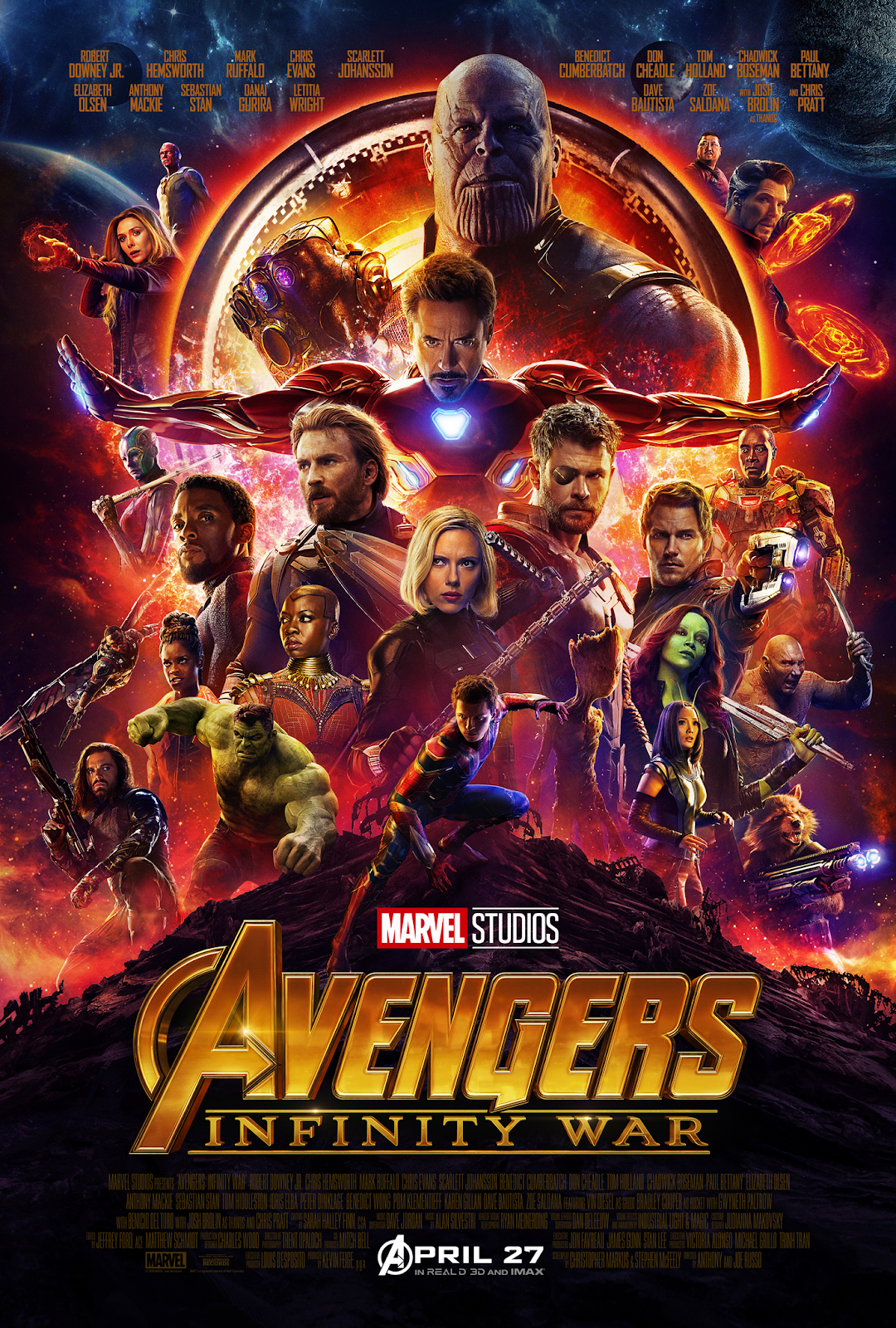In my last post, I said I was going to talk about why I used the word "franchise." This is because it has almost become standard practice for action films to end on a cliffhanger. One of the longest-running jokes in Hollywood is the seemingly unending story of the Fast & Furious films. According to Wikipedia, a cliffhanger is a "plot device in fiction which features a main character in a precarious or difficult dilemma or confronted with a shocking revelation at the end of an episode or a movie of serialized fiction. A cliffhanger is hoped to incentivize the audience to return to see how the characters resolve the dilemma."
Another franchise known for its cliffhangers is the Marvel Cinematic Universe (MCU). The films in the MCU will often have a resolved story, but the credit roll at the end of the film likely will contain a small scene that often features a side character and sets up a future film. A good example of this is the post-credit scene from Avengers: Infinity War (2018). In the film, fans were shocked to see the Avengers lose to the villain Thanos and the film ends with a victorious Thanos and half of all life in the universe snapped from existence. In the post-credit scene, a side character in the film, Nick Fury, sees people around him begin to turn to dust (this is the moment Thanos snaps away half of all life). Fury pulls out an old pager and as he begins to turn to dust, the pager sends a signal to Captain Marvel, the titular character of the next Marvel film released after Avengers: Infinity War. The entire point of the scene was to encourage the audience to go see Captain Marvel when it releases to see how the character is related to the unresolved story of Avengers: Infinity War.
One film whose ending was groundbreaking was Star Wars: The Empire Strikes Back (1980). When it was released, Star Wars was nowhere near the level of popularity it has today, but with the great success of its predecessor Star Wars (1977), now known as Star Wars: A New Hope, fans were clamoring for a sequel. Thus, Empire Strikes Back was released. At the end of the film, however, the heroes are left battered. The series iconic villain Darth Vader is revealed to be the main hero Luke Skywalker's father, Luke loses a hand in a duel with Vader, and Han Solo is frozen in carbonite and taken away by a bounty hunter. This left audiences dying to know if Han Solo is ever rescued or if Luke would ever take on Vader again. The sequel to this film, Star Wars: Return of the Jedi, resolves the story of what became to be known as the Original Trilogy of Star Wars films. The cliffhanger strategy worked immediately because Return of the Jedi ranked in almost $50 million more than Empire Strikes Back in domestic total. And this strategy of ending every film on a cliffhanger paid off in the long run because since then, Star Wars has become one with pop culture and is currently the 5th highest-grossing media franchise ever. There have been animated and live-action TV shows, prequel, and sequel film trilogies, toys, comics, books, etc. All from 3 films that created hype for the following one by purposely not ending the story.
It's very clear that cliffhangers are a widely used tool in action films to generate excitement for a sequel. A sequel means more money and more money makes the big executives of Hollywood very happy. While I'm only creating a film opening of 2 minutes, a cliffhanger would definitely add suspense and leave the audience wanting more.
Sources
Wikipedia Page for Cliffhangers


No comments:
Post a Comment